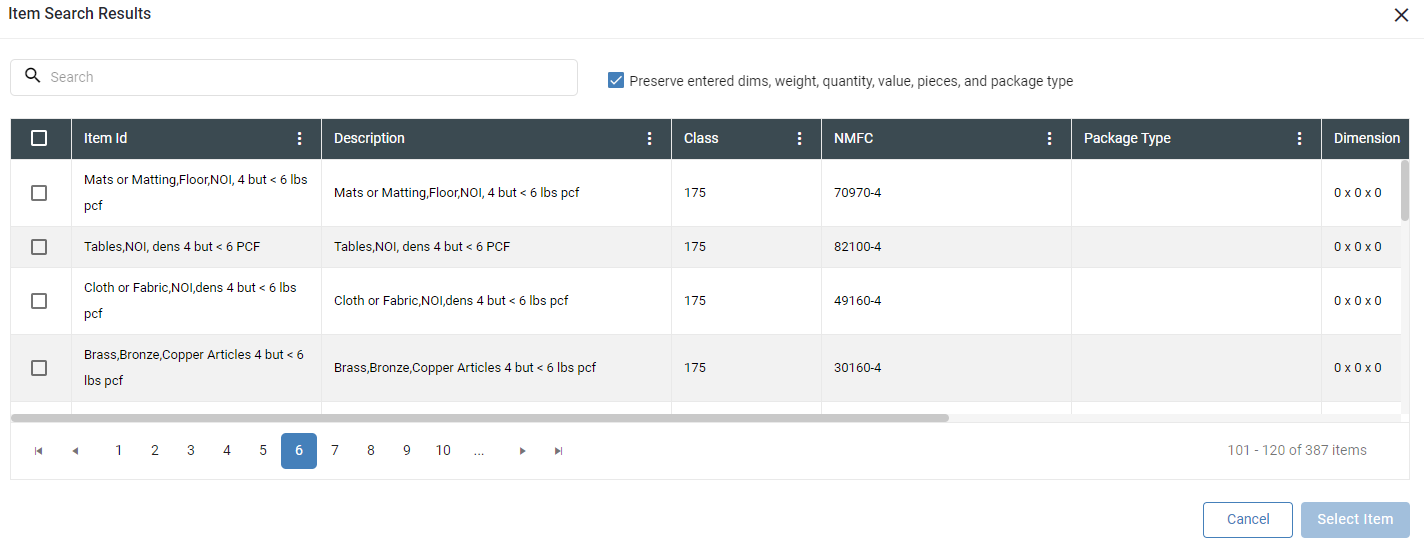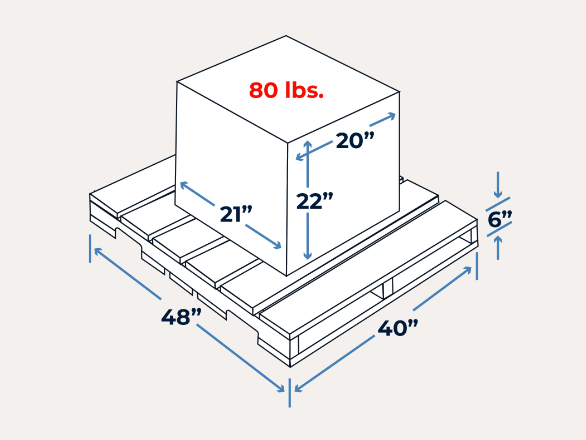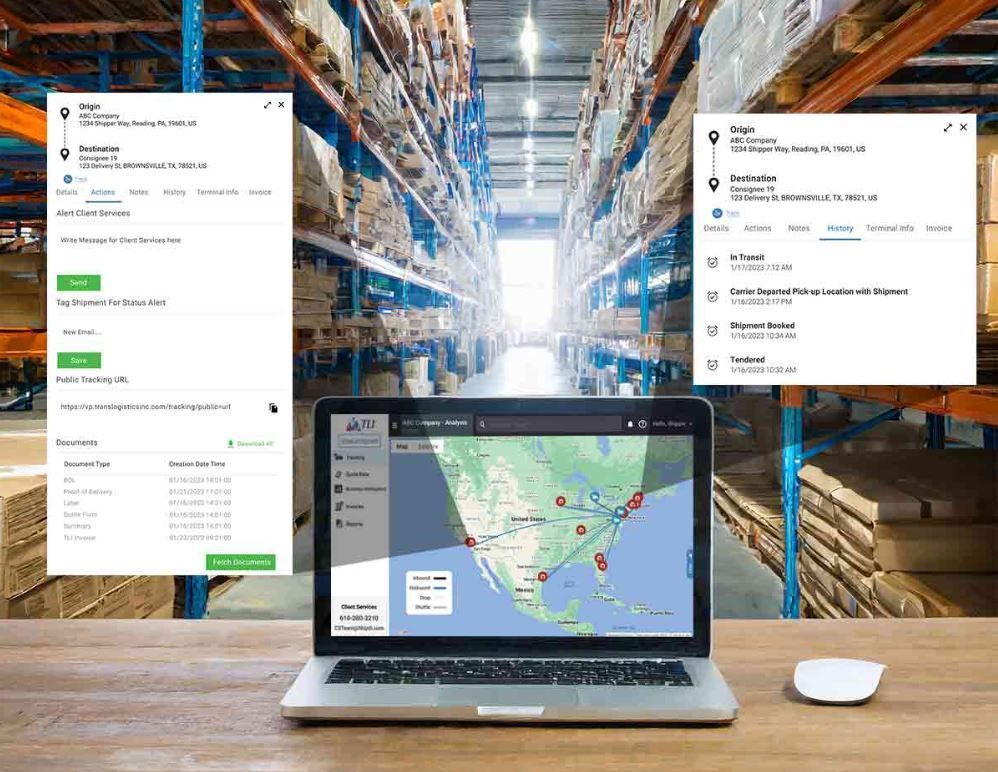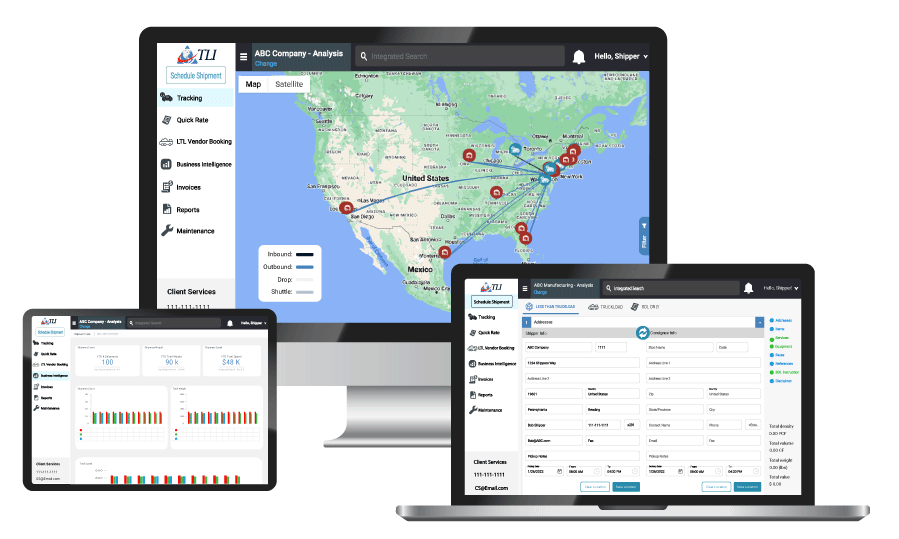How to Determine your Shipment's Freight Class
What is freight class?
Freight class, largely determined by the National Motor Freight Classification (NMFC), is a standardized system used to categorize less-than-truckload (LTL) freight shipments according to specific criteria. This classification is based on various factors such as value, weight, length, density, claims ratio, and stowability, among others.

How do I determine the freight class?
LTL carriers typically calculate freight charges based on the weight and volume (cube) of the items being shipped. To aid in this process, the National Motor Freight Traffic Association, Inc. develops and releases the National Motor Freight Classification (NMFC), a standard reference for determining the freight classes applicable to different commodities and products. Each commodity is assigned to one of 18 distinct freight classes, represented by numeric values ranging from 50 to 500. Many commodities are density based, so the use of a free density calculator is essential, in TLI's TMS System the density calculator is built in. The density calculator determines the correct PCF, and this calculation enables the rating engine to know the CWT to rate the shipment with.
Determining freight class is easy with a TMS system that can automatically retrieve freight class, and even offers NMFC lookup technology. Four key characteristics determine the freight class of a commodity: density, stowability, handling, and liability. It's important to note that the table provided below offers a general overview of how NMFC classes correlate, but adjustments may be made based on factors such as commodity specific NMFC codes, FAKs negotiated into the contracts, handling, liability, and stowability, which can influence the assigned class and consequently affect the shipping cost.
Rule of Thumb: The lower the density, the higher the freight class.
| Freight Class | Greater than or equal to ≥ | Less than < |
|---|---|---|
| 50 | 50 | N/A |
| 55 | 35 | 50 |
| 60 | 30 | 35 |
| 65 | 22.5 | 30 |
| 70 | 15 | 22.5 |
| 77.5 | 13.5 | 15 |
| 85 | 12 | 13.5 |
| 92.5 | 10.5 | 12 |
| 100 | 9 | 10.5 |
| 110 | 8 | 9 |
| 125 | 7 | 8 |
| 150 | 6 | 7 |
| 175 | 5 | 6 |
| 200 | 4 | 5 |
| 250 | 3 | 4 |
| 300 | 2 | 3 |
| 400 | 1 | 2 |
| 500 | 0 | 1 |
How I do determine shipment density?
To calculate the density of your shipment, you must measure the length, width, and height of the package and multiply these dimensions to obtain the total cubic inches. Next, divide the weight of the package by the total cubic inches to determine the density of the shipment.
- Measure the shipment's dimensions, and multiply together:
- length x width x height
- Divide the result by 1,728 (cubic inches per foot) to find the cubic feet of the shipment.
- Divide the weight by the total cubic feet.
What is the purpose of Freight Class?
The NMFC serves the purpose of establishing a standardized framework for comparing and classifying commodities in freight transport. This is essential for streamlining assessments in the vast array of products transported annually in today's shipping industry. By serving as a definitive reference point for both shippers and carriers, this system fosters efficient and effective negotiations on freight rates and logistics.

What Determines the "Transportability" of Freight Class?
Freight class gauges a commodity's overall "transportability" through four main metrics:
- Density
- Ease of handling
- Liability
- Stowability
Additionally, factors such as the packaging type, distance, volume, and other market variables may influence the classification of your freight.

Density
Density refers to the amount of space occupied by an item relative to its weight. Freight classification assigns Class 50 (the lowest freight class) to items weighing more than 50 pounds per cubic foot. Conversely, at Class 500, we find items with a density of less than 1 pound per cubic foot, such as gold flakes.
Ease of Handling
Loading and unloading most cargo is typically straightforward, particularly when handled by machinery. However, certain freight demands special care and attention due to irregularities in weight and shape, excessive fragility, or hazardous properties. In such cases, adjustments to freight classification may be necessary. A primary example are granite countertops, while the product is very dense, the value is high, and the ease of handling is poor making the freight class higher than comparable commodities of similar density.
Liability
When ensuring accountability, the increased risk of theft or accidental damage is taken into account. Perishable items and when shipping hazardous chemicals, for example, pose potential liability concerns and additional costs.
Stowability
Certain types of freight are governed by government regulations or carrier-specific policies (i.e. shipping ammunition and batteries.) Some freight cannot be loaded together, including certain hazardous materials, exceptionally heavy freight, or freight that protrudes in a fixed, inconvenient direction. Freight class seeks to assess relative stowability, indicating the ease or difficulty of handling different types of freight.

Freight Class Shipper Support
TLI stands out as the premier LTL freight broker, renowned for its unparalleled expertise and dedication to serving shippers' needs. With our comprehensive support, as a licensed LTL freight broker, we assist shippers in accurately determining the appropriate freight class for their shipments, ensuring efficiency and cost-effectiveness. Moreover, by leveraging our cutting-edge Transportation Management System (TMS), we eliminate the hassle of manual freight class calculations, thereby minimizing reclasses and streamlining the shipping process.
Experience the benefits of partnering with TLI today, delegate the freight class headaches away by clicking the "Get Started" button and unlocking logistics solutions that make shipping easy.
TLI Insights
Get the latest logistics insights and tips from Translogistics’ award-winning team. Stay ahead in transportation planning.
Questions? Email us at marketing@tli.email




